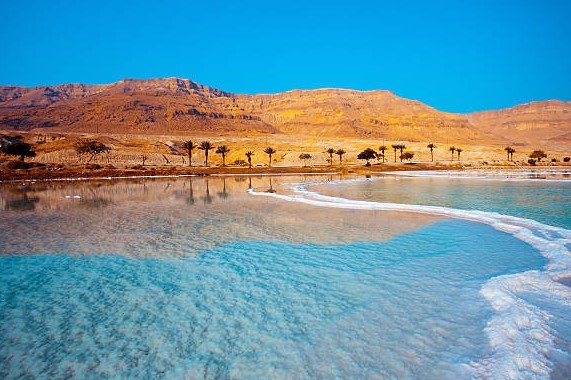Jordan is ramping up efforts in sustainable tourism to protect its rich cultural heritage and stunning natural sites amid growing visitor numbers. Recent initiatives, launched in 2025, focus on balancing economic gains with conservation in places like Petra, the Dana Biosphere Reserve, and the Dead Sea, driven by government strategies and community involvement.
Key Initiatives Driving Change
Jordan’s government has rolled out several programs this year to promote sustainable tourism. The Economic Modernization Vision, updated in 2025, includes the “Jordan: A Global Destination” plan, which aims to enhance competitiveness while preserving sites.
One major push is the Jordan Tourism Development Vision 2030, announced in June 2025. This strategy tackles challenges like overtourism and climate impacts by fostering inclusive growth. It emphasizes eco-friendly practices and community benefits to overcome crises and build resilience.
Authorities have also introduced specialized projects. For instance, the Aqaba Special Economic Zone Authority launched a voluntary tourism program in Wadi Rum three weeks ago. This initiative empowers local youth through training in sustainable guiding and environmental protection.
The Jerash Eco-Tourism Village, set to open by mid-2027, will feature a 55-room eco-hotel and modern facilities. It promises to boost travel while highlighting Jordan’s natural and cultural beauty.

Preserving Iconic Heritage Sites
Petra, the ancient rock-cut city and UNESCO World Heritage Site, draws millions of visitors yearly. To manage crowds, the Petra Development and Tourism Region Authority limits daily entries and promotes off-peak visits.
Recent conservation efforts include eco-friendly transport like electric shuttles inside the site. These steps help reduce erosion and pollution, ensuring the Nabataean wonders last for future generations.
Local communities play a big role too. Bedouin groups now lead guided tours that share cultural stories, creating jobs and fostering pride in heritage protection.
In 2025, Petra saw a surge in sustainable activities, such as night tours with low-impact lighting. This not only enhances visitor experiences but also cuts daytime pressure on the site.
Collaboration with international experts has aligned these efforts with global standards, making Petra a model for responsible tourism worldwide.
Protecting Natural Wonders and Biodiversity
The Dana Biosphere Reserve stands out as Jordan’s largest nature haven, covering diverse landscapes from mountains to valleys. Managed by the Royal Society for the Conservation of Nature, it offers eco-lodges and trails that educate on local flora and fauna.
Community involvement has transformed the area. Former herders now guide tours, reducing overgrazing and hunting. This shift has boosted biodiversity, with species like the Nubian ibex thriving as tourist attractions rather than targets.
Recent data shows visitor numbers rose by 15 percent in early 2025, yet conservation metrics improved due to strict no-grazing zones and restoration projects.
Wadi Rum, another gem, benefits from new programs like the voluntary initiative. These focus on waste reduction and cultural preservation, blending adventure with eco-awareness.
At the Dead Sea, declining water levels pose a threat. Initiatives include awareness campaigns and the Dead Sea Museum, which teaches sustainable water use to tourists and locals.
Economic and Community Benefits
Sustainable tourism in Jordan is creating real economic wins. The sector contributed about 13 percent to GDP in 2024, with projections for growth to 15 percent by 2030 under the new vision.
Jobs in eco-tourism have surged, especially in rural areas. For example, the Dana Reserve employs over 200 locals in guiding and hospitality, up from 100 five years ago.
These efforts also empower women and youth. Training programs in Wadi Rum and Jerash provide skills in sustainable practices, leading to better livelihoods.
- Increased tourism revenue: Up 20 percent in the first half of 2025 from regional and international markets.
- Job creation: Over 5,000 new positions in eco-friendly roles since 2023.
- Community projects: Funding for 57 historic house restorations in Dana village.
Challenges and Future Outlook
Despite progress, challenges remain. Climate change and regional instability could impact visitor flows. Experts note that water scarcity at the Dead Sea requires ongoing international cooperation.
Jordan’s response includes partnerships with organizations like USAID for infrastructure upgrades. The 2025 boom in tourism, with sustained growth from markets like Europe and Asia, shows promise.
Looking ahead, the 2030 vision aims for inclusive growth, targeting a 10 percent annual increase in sustainable visitor spending.
To track these developments, here’s a quick overview of major sites and their key sustainable features:
| Site | Key Initiative | Impact |
|---|---|---|
| Petra | Visitor limits and eco-transport | Reduced site erosion by 25 percent |
| Dana Biosphere Reserve | Community-led tours | Biodiversity boost and 200+ jobs |
| Wadi Rum | Youth voluntary program | Enhanced environmental awareness |
| Dead Sea | Education campaigns | Promoted water conservation |
| Jerash | Eco-village project | Set for 2027 opening with green facilities |
These steps position Jordan as a leader in sustainable tourism, blending preservation with prosperity.
What do you think about Jordan’s approach to sustainable tourism? Share your thoughts in the comments and spread the word to help raise awareness.
